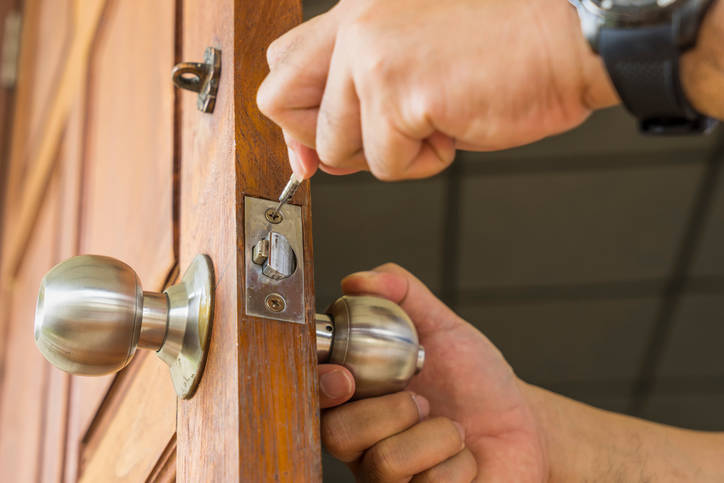Door problems are an easy fix

Q: I have door problems. One of my doors closes by itself, and it isn’t supposed to. The other door doesn’t latch correctly. How can I fix these?
A: If all of life’s problems were as simple as these, you, my friend, would be on easy street.
Let’s take the first problem. This door closes by itself because it is not plumb.
You could spend hours trying to get it plumb, putting shims behind hinges and chiseling wood here and there. Or you could decide to do the quick fix: bend the door’s hinge pin.
Now, you’re not going to bend it by much, mind you, just enough to cause a little friction in the hinge. Pop the bottom hinge pin out by tapping it with a stubby screwdriver and a hammer.
Set the hinge pin on a hard surface (not the kitchen table) such as the sidewalk. Tap it gently with a hammer in the center of the pin so that it puts a slight crook in the pin. I’m talking so small that you might not even notice it by inspecting it.
Reinstall the pin by tapping it into the hinge with a hammer. If your door is large and heavy, you may need to repeat this with the next hinge pin to gain some uniform friction. Problem solved.
The other door that doesn’t latch correctly is easy to fix, too, but not as easy as smacking a hinge pin with a hammer.
This problem stems from the strike plate and the door latch not being aligned. The strike plate is the flat piece of metal on the doorjamb with the hole in it that accepts the door latch (it’s the part that sticks out of the side of the door).
The door latch may be too high or low to enter the hole in the strike plate. The strike plate may be so far in that you practically have to throw your shoulder into the door to get it to latch.
Assuming the problem isn’t due to a warped door, you really have only two options: move the strike plate or the door latch.
If the alignment problem is due to a height difference between the strike plate and latch, try to move the latch first. Cut out a piece of cardboard and shim it behind one of the door hinges. If the latch is too high, place the shim between the doorjamb and the top hinge. If the latch is too low, shim between the doorjamb and the bottom hinge.
The other option is to unscrew the two screws that hold the strike plate and raise or lower it to meet the latch. The only downfall with this is that you will need to chisel out the wood in the strike jamb so that the plate sits flush with the jamb. This isn’t hard, but it will leave a noticeable mortise. This, however, can be filled in with wood putty and painted.
Align the strike plate with the latch and make trace marks with a pencil on the jamb. Chisel out the wood to the depth of the plate. Use short, light taps instead of one big one as you will tear out more wood than you expect.
Fill in the old screw holes since you will likely be moving the strike plate a small amount (the screws will tend to wander into the old holes and make alignment nearly impossible). Slather wood golf tees with wood glue, stuff them into the holes and saw them off flush with the surrounding wood.
Hold the strike plate back up to the jamb and mark the location of the holes. Pre-drill small pilot holes and then screw the strike plate to the jamb. Your door should close and latch effortlessly.
Mike Klimek is a licensed contractor and owner of Las Vegas Handyman. Questions may be sent by email to handymanoflasvegas@msn.com. Or, mail to 4710 W. Dewey Drive, No. 100, Las Vegas, NV 89118. His web address is www.handymanoflasvegas.com.